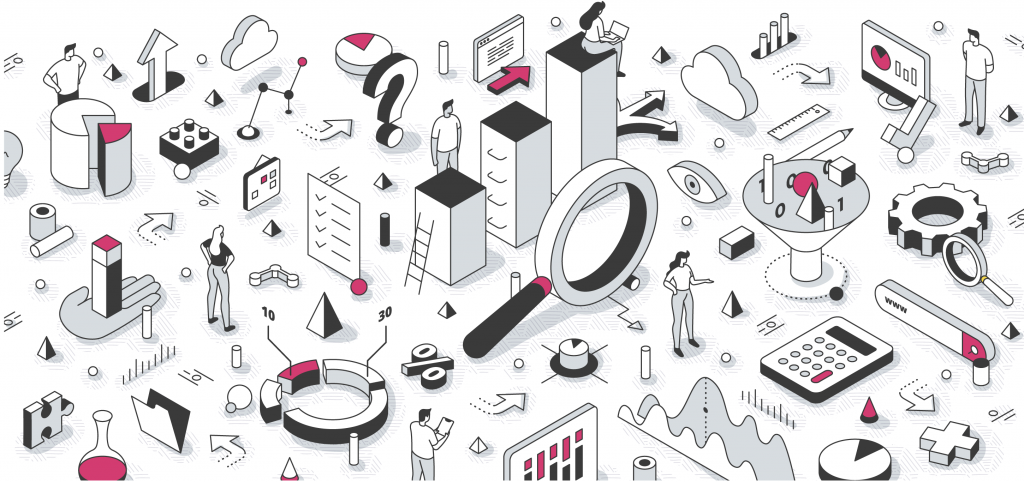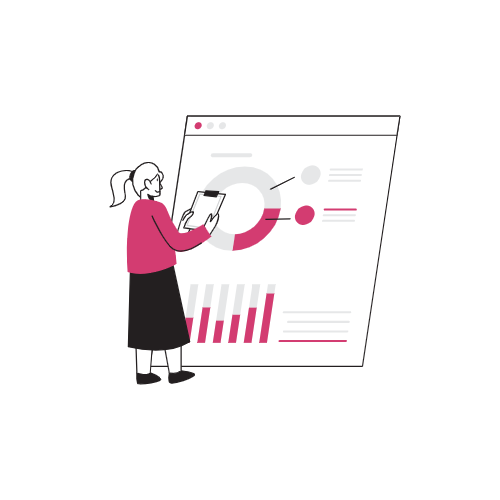Understanding consumer demands and preferences is crucial in the ever-changing digital context for offering a seamless user experience (UX). This is where design research comes in since it aids in the discovery of significant insights that guide the design process. This thorough guide will walk you through the fundamentals of UX design research, covering crucial approaches, tools, and best practices to help you create user-centric products and services.
The Fundamentals of Design Research
Understanding the Core Concepts
A systematic approach to understanding users and their interactions with products, services, and interfaces is design research. UX professionals obtain significant data that inform their design decisions by combining qualitative and quantitative research methodologies. This user-centered approach ensures that the final design matches user expectations and provides a great experience.
The Importance of Design Research
Design research is necessary for a number of reasons:
Identifying user needs: Understanding what users genuinely require is critical for building meaningful experiences. Design research reveals these needs and enables designers to connect their work with consumer expectations. For example, while developing an app for a bank, a designer may uncover through interviews that people struggle to manage their funds, leading to the development of financial management within the banking app.
Reducing design risks: Potential design flaws can be recognized early through research, reducing the risk of costly redesigns and negative user feedback. A design team may see people failing to navigate a website, requiring revisions to the structure and organization of the site before launch.
Enhancing usability: Design research reveals how people interact with products, allowing us to maximize usability and accessibility for a wide range of user profiles. A designer, for example, can detect and address accessibility concerns by testing a prototype with visually impaired people, resulting in a more inclusive experience.
Driving innovation: Design researchers can find chances for innovation and create unique solutions that stand out in the market by researching user behavior. Analyzing user data from a fitness app may suggest that users want more personalized workout recommendations, which may inspire the development of a new AI-powered feature.

Design Research Techniques
Qualitative Research Methods
Qualitative research methodologies aid in uncovering user motivations, feelings, and behaviors. It typically involves open-ended questions and encourages users to share their thoughts and experiences. Among the most popular qualitative approaches are:
Interviews: Having one-on-one interviews with users enables in-depth conversations that provide significant insights into their needs, preferences, and difficulties. A designer, for example, can interview clients of an e-commerce site to learn about their preferences for browsing and purchasing things.
Focus groups: Bringing together a group of users to talk about their experiences with a product or service might result in rich, diversified viewpoints. Preferences for playlist curation, social features, and audio quality may be revealed in a focus group for a new music streaming service.
Observations: Researchers can uncover usability flaws and understand the context of use by observing users as they interact with a product or interface. Observing customers navigate a public transportation app in a crowded train station can assist a design team in understanding the obstacles and requirements for real-world usage.
Diary studies: Participants in diary studies capture their experiences and ideas over time, providing insights into their daily routines and interactions with items. A diary study for a smart home system could reveal usage trends, user preferences for certain functions, and areas where the system falls short.
Quantitative Research Methods
Quantitative research approaches entail gathering and analyzing numerical data. Approaches that are commonly used include:
Questionnaires: Questionnaires assist collect vast amounts of data from users, providing insights into trends and patterns in user activity. A poll asking users about their ride-sharing app experiences could indicate levels of satisfaction, typical pain points, and feature requests.
Analytics: Data analytics can identify customer preferences, behavior trends, and opportunities for development by analyzing data from website or app usage. A design team can uncover popular topics and optimize content presentation by analyzing user engagement data from a news website.
A/B testing: Comparing the performance of several design variations helps in determining the most effective solution to a specific design problem. On a landing page, a designer might test two distinct button layouts to see which one leads to higher conversion rates.

Analyzing and Synthesizing Design Research Data
After gathering a diverse set of design study data, the next crucial stage is analysis and synthesis. This process entails analyzing data, recognizing patterns and insights, and converting these into practical design ideas.
Organizing Your Data
To start the analysis, you must first sort and organize your data. This could include transcription of interviews, collation of survey data, or extraction of critical indicators from your analytics platform. Proper organizing is essential for gaining a full view of your findings and identifying trends and correlations.
Identifying Themes and Patterns
Then, actively dig into the data for developing themes and patterns. For example, if you performed user interviews, you may have discovered common subjects or attitudes that were expressed in several interactions. Similarly, you may see trends in responses or noteworthy data points in survey data. Remember that you’re looking for subtle indications as well as prominent trends that could indicate deeper user insights.
Synthesizing Insights
Synthesis is the process of understanding the patterns you’ve discovered and drawing significant conclusions. This is where you’ll transform raw data into useful user insights. During this phase, you begin to construct a narrative that recounts the story of your users, including their requirements, goals, and pain points. It is critical to approach this phase with an open mind and be willing to challenge your original ideas.
For example, if data shows that consumers frequently abandon their online shopping carts, you can argue that there are obstacles to making a purchase. Further investigation may indicate that these hurdles are a difficult checkout process, a lack of trust signals, or unexpected delivery fees.
Communicating Findings and Recommendations
Finally, inform the rest of your team about your findings and recommendations. This is a critical stage in ensuring that the insights gained from your investigation feed into the design process. Your presentation should be clear and convincing, including evidence from your data as well as interpretations and recommendations.
Based on the previously mentioned shopping cart abandonment issue, you might suggest simplifying the checkout process, adding user testimonials or security badges to boost trust, or making shipping prices evident earlier in the purchasing cycle.
Let’s delve into some specific best practices for analyzing and synthesizing design research data:
Data Triangulation:
Data triangulation is the use of various sources or ways to collect and cross-check data. This practice adds credibility to your findings and contributes to a more comprehensive comprehension of the research issue. For example, if you’re researching user activity on a website, you might integrate website analytics data, survey results, and interview transcripts to provide a more complete picture of user behavior and motivations.
Create User Personas:
User personas are fictitious characters that reflect your primary user segments. They are generated based on your research data and incorporate your users’ traits, activities, and needs. Personas can assist you in better understanding your audience and keeping user demands in mind when you interpret research and make design decisions.
Use Data Visualization Techniques:
Data visualization techniques can be used to effectively evaluate massive amounts of data or complex patterns. This could include making graphs, charts, or maps, as well as employing more complicated visualization techniques. Visual representations can assist you in identifying patterns or trends that may not be obvious when looking at raw data alone.
Affinity Diagramming:
This is a technique that is frequently used to uncover patterns and themes in qualitative data. All observations or data points are written on sticky notes and then sorted based on their similarities. Overarching themes are subsequently assigned to these categories. This visual and tactile strategy might assist you in identifying connections and correlations in your data.
Iterative Analysis:
Do not expect to find all of the answers in a single run. Iterative processes are frequently used in analysis. New questions may develop when you examine the data, integrate discoveries, and communicate ideas with your team, necessitating a revisit of the data.
Collaborative Analysis:
Collaborative analytical entails involving several team members in the analytical process. Different people will provide different viewpoints, which can lead to a more complete and rich understanding of the facts.
Maintain an Audit Trail:
As you move through the analytical process, document your methodologies, conclusions, questions, and findings. This approach, also known as keeping an audit trail, gives transparency to your analysis, assists others in understanding how you reached your results, and allows you to return and learn from your method in the future.
Best Practices for Conducting Design Research
Define precise research goals
Defining particular research goals can assist you in selecting the most appropriate methodologies and tools for your project, ensuring that the data acquired is relevant to your needs. For instance, if the goal is to learn consumer preferences for a meal delivery app, a researcher may conduct interviews and surveys.
Recruit diverse participants
To capture varied perspectives and experiences, ensure that your study participants represent a diverse variety of user profiles. For example, while developing a fitness app, the design team should include people of all ages, exercise levels, and ambitions.
Maintain objectivity
It is critical for a researcher to stay neutral and avoid influencing participants’ responses, as this might lead to skewed results. When conducting interviews or focus groups, researchers should ask open-ended questions rather than leading ones that could sway participant responses.
Prioritize user privacy
When conducting a design study, always protect participants’ personal information and follow ethical norms. Obtain participants’ informed consent, and ensure that any personal data obtained is securely maintained and used exclusively for the intended purpose.

Integrating Design Research into Your Design Process
Kick-off phase: Start your project with a design research strategy that details the objectives, methodologies, and timetable for your research efforts. This guarantees that design research is prioritized and included from the beginning of the project.
Discovery phase: Conduct exploratory research to learn user wants, preferences, and pain areas throughout the discovery phase. This data will act as the foundation for your design ideas. A user experience researcher may examine customer support data to uncover prevalent user problems with a software product.
Ideation phase: Use your research findings to generate innovative solutions that answer user requirements and aspirations. For example, a design team might use user interview data to create new features for a project management tool, such as increased collaboration possibilities or a more user-friendly user interface.
Prototyping and testing phase: Create interactive prototypes and test them with users, tweaking your design based on their input and research discoveries. A design team may utilize InVision to construct a prototype of a new website layout, then perform usability testing with users to discover any problems or places for improvement.
Implementation and evaluation phase: Launch your product or service and continue to gather user feedback, iterating and improving your design via design research. A design team, for example, can study user feedback and analytics data after releasing a new app to identify any remaining pain points and prioritize upgrades.
The Future of Design Research
Design research will continue to adapt and extend as technology advances. New tools and methodologies are continually being developed, and design researchers must keep current in order to continue providing significant insights and novel solutions. The following are some significant trends influencing the future of design research:
Artificial Intelligence (AI) and Machine Learning (ML):
AI and machine learning technologies provide innovative methods for collecting and analyzing user data, resulting in deeper insights and more efficient design research procedures.
AI-powered sentiment analysis tools, for example, can rapidly assess vast amounts of user feedback, discovering trends and emotions that would take human researchers considerably longer to identify.
Similarly, ML-powered predictive analytics can find patterns in user activity that forecast future behaviors. An e-commerce company, for example, may utilize ML algorithms to examine browsing and purchase histories, anticipating things a user might be interested in and providing customized suggestions.
Virtual Reality (VR) and Augmented Reality (AR):
Immersive experiences are created by VR and AR technologies, giving design researchers new opportunities to model and test user interactions.
Users can engage with a fully digital environment in VR, enabling a one-of-a-kind opportunity to prototype and test goods in controlled yet realistic circumstances. For example, a corporation developing a new car may utilize virtual reality to allow people to “test drive” the vehicle and provide input on the design and features without the need for a physical prototype.
AR overlays digital information on the actual world, allowing users to interact more effectively with tangible items or locations. A retailer, for example, may employ augmented reality to allow buyers to see how furniture would look in their own homes, testing and refining the user experience based on feedback.

